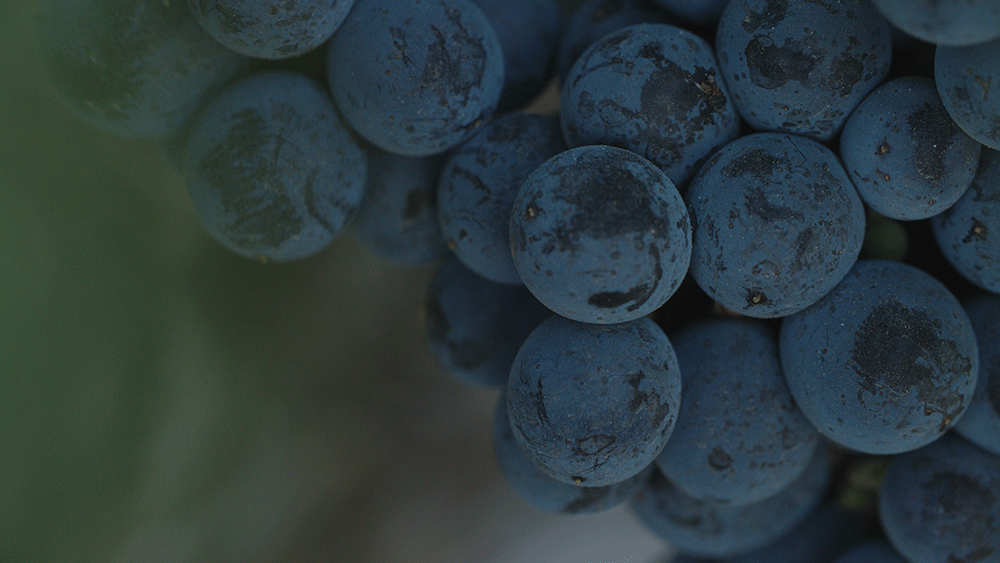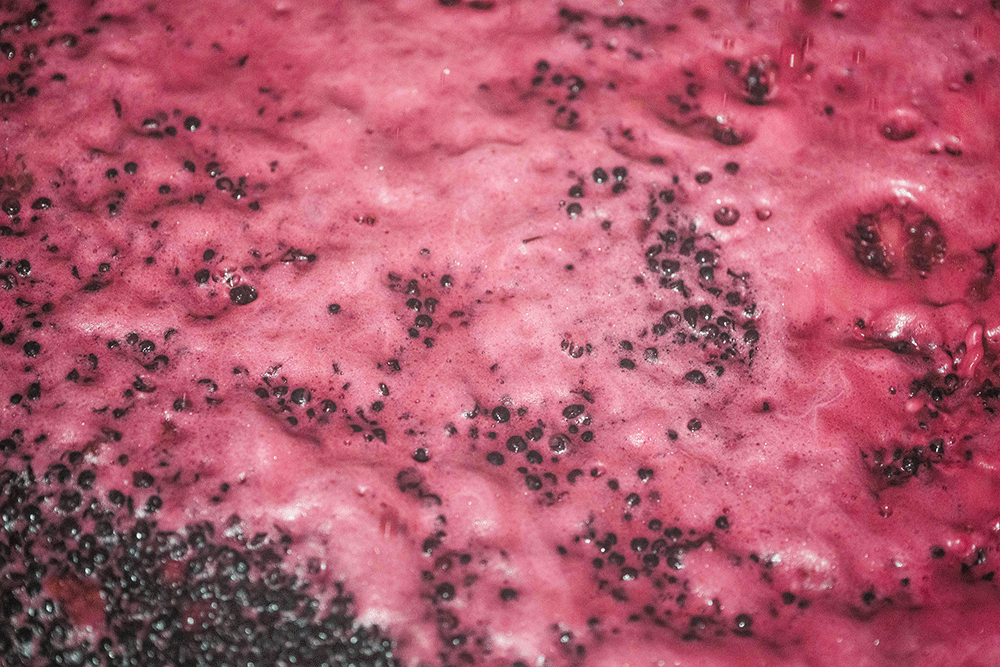The Long and Winding Road
When that favorite wine hits your porch every year, familiar details—the bottle, the label, the name alone—channel pleasure.
And yet, it’s not the wine you loved last year. Great wine is never a copy. The vineyard might be a constant, but everything else is in flux: the weather, farming choices, the artistic license that shapes its character in the cellar. A wine like The Pact is alive—growing and changing annually, evolving with the journey of its winemakers.
Just ask Faust Estate Director, Jen Beloz, and Winemaker, David Jelinek, who each have two favorite day jobs—walking the vineyard in Coombsville, and sitting at the blending table, nurturing the best vintage of The Pact each year. Their vineyard rambles have established in them a deep understanding of its soils and minute weather patterns, the needs of each row of vines, and the kind of wine that each part of the vineyard wants to make. Beloz and Jelinek are constantly making changes, translating what they’ve learned over the years into better vine health and farming decisions. “We question ourselves constantly,” Beloz says, “not
because we’re unsure, but because we want to make the best choices.”
Irrigate this block of vines? Additional fruit thinning in that one? After the better part of a decade on the job together for Beloz and Jelinek, those choices are dialed in now. Ripeness at the end of the season is precise, with a balance earned in the trenches, so to speak.
And their blending job in the cellar, before the wine is funneled into that familiar bottle? Well, The Pact doesn’t really become The Pact until that process begins—until the winemakers achieve a mouthwatering blend from a myriad of distinctive little lots.
So, if you think about it, Faust’s signature wine is really a Pact from Beloz and Jelinek: They’ve been striving for something better every year, something more delicious. And this year, the stars aligned. That is, 2021 was a Goldilocks of a growing season. It all
came together. Here’s how.
FIRST OF ALL, A VINEYARD IS ACTUALLY LOTS OF = LITTLE VINEYARDS
From the view of a drone overhead, a vineyard in midsummer looks like a graphic collection of neatly mapped rows, curving around a west-facing hill here, dipping through a swale there. All uniformly green, all in lockstep. But spend as much time on the ground as Beloz and Jelinek do, and you start to see differences. “There’s so much you learn walking the same land over and over (and over!) again,” Beloz says. “This area always ripens first; that area needs extra irrigation because it’s always stressed out.”
Winemakers have always had hunches and theories—about where the most interesting soils are, why some areas produce wild growth. Now, modern technology can help confirm those hunches, giving makers an intricate view of conditions throughout the vineyard.
Armed with this high-tech data, the team maps out the vineyard according to conjoining blocks, which are shaped more like amoebas than quilt squares. These “blocks” bend and curve and undulate. Knowing the effect of afternoon sun, they’ve adjusted trellises on the vines in some areas, allowing the right amount through the canopies for more even ripening. Tracking moisture stress in other blocks, they’ve run new irrigation systems to be ready for hotter summers.
In short, over the past six years, they’ve refined the vineyard—as an artist might the colors on her palette—for a more brilliant but precise harvest at the end of every growing season. It’s a matter of getting the grapes in each block ripe within a narrow window during harvest time, extracting the most accurate expression of each part of the vineyard. “Taking the tails off the bell curve,” Jelinek calls it, “so we don’t have overripe fruit from one block and underripe fruit from another block. We want maturity from both sugar development and tannin evolution throughout.”
Faust Vineyard now is a mosaic of parcels, each poised to contribute distinctive flavors to a complex Pact every vintage.

YOU CAN NEVER PREDICT THE SEASONS
Anyone who believes California doles out perfect sun all summer isn’t a winemaker. French vignerons might covet a “typical” warm Napa Valley growing season, but in truth, every vintage throws curveballs—a late spring that threatens frost at bud break, too little or too much heat that slows or surges ripening, and, the most difficult new condition of all, the threat of fire at harvest time.
Beloz and Jelinek shadow every row in the vineyard as the vines mature and clusters ripen, ready to act on behalf of the kind of Cabernet that the cool climate of Coombsville wants to make—adjusting canopies, pulling green clusters so a smaller crop can ripen faster, picking block by block and row by row the minute they achieve pinpoint ripening. “It’s all the teeny steps that add up to higher quality,” David says. “Understanding every parcel of the vineyard better every year, and treating each one differently.”
That deep understanding of Coombsville Cabernet, and how to coax the best from Faust Vineyard in the face of fluctuations every season, has been a few years in the making. Beloz remembers an aha moment in 2018. “There’s a thread that runs through The Pact, starting with the 2018 vintage,” she says. “Freshness, brighter acidity—that’s Coombsville Cabernet.”
From 2018 through 2020, The Pact carries this character, yet each wine has a personality of its own: complex florals and spice along with meaty concentration in the 2019, a refreshingly even growing season; a little more weight and plushness in the 2020, a warmer year.
These are the stamps of time—circumstances no winemaker can control. But Beloz and Jelinek have nurtured every block to deliver classic Coombsville character, no matter the growing season, giving themselves exceptional ingredients to work with for
what comes next in the cellar.

FROM MANY LOTS, ONE BLEND
They say great wine is made in the vineyard. Yes, but… dozens of great wines are made in Faust’s Coombsville vineyard each year. Every micro lot, the fruit picked at peak ripeness from just a few rows, is a superb wine on its own. A pure expression of a tiny plot of land. But it’s not The Pact.
One lot is all mineral, another all fine-grained tannin (“just bone,” as Beloz puts it), another has a little more “flesh,” because there was more topsoil in that block. If you pick those all at once, explains Jelinek, their distinct traits are blended away in big tanks. But if you keep the lots separate (read, invest in small tanks—many of them), the winemaking can be customized to maximize each “true expression” of the vineyard. Extract just the right amount of tannin from skins and seeds, control fermentation temperatures
to capture distinct aromatics, match barrels to wine character for the best integration.
hen the fun begins. Blending is a lot like cooking. Beloz and Jelinek literally decide how much wine to use from each small lot, combining the unique traits to create the blend that is this year’s Pact. Here’s Beloz’s take on their role as chefs in the cellar: “We get to craft the blend using these very pure components to create our interpretation of the expression of Coombsville Cabernet.”
The pair might select wine from one lot for The Pact because of its intense graphite minerality, or its savory herbs, wonderful mouthfeel, or backbone of acidity. But the lots have to fit together, counterbalance each other, like the ingredients in a great dish on a Michelin-starred menu.
One note never suffices. “A wine made from a single lot with really intense minerality could be super-interesting—if you just drink one glass,” says Jelinek. “But you’re not going to want to drink a whole bottle of it.” The magic of blending, he says, is the chance to combine all the layers that make The Pact entirely compelling—“hedonistic enough that you want to keep drinking glass after glass.”
“There’s a thread that runs through The Pact, starting with the 2018 vintage. Brighter, fresher acidity—that’s Coombsville Cabernet.”
Estate Director, Jen Beloz
WINE ALWAYS COMES BACK TO FOOD
Let’s be honest—Cabernet Sauvignon can be a diva. It can sport such high alcohol levels or pounding tannins that it can’t make nice with much of anything on the dinner table. Put a little heat in the food, and high alcohol ignites a veritable fire in your mouth.
And overly firm tannins can only be tamed by the marbling in a well-aged rib-eye.
Such a Cabernet isn’t suited to the way most of us eat these days. It’s not the kind of Cabernet Beloz and Jelinek love to drink—or make. And it’s not the kind of wine the Faust vineyard naturally shapes. The long, cool seasons in Coombsville, with the region’s swirling fog and breezes off San Pablo Bay, ensure slow, even ripening. Sugar levels are still moderate when skins and seeds are fully mature and grapes have developed complex flavors. And most important of all, acidity levels remain high and bright.
That, in a nutshell, is a good food wine. And that describes The Pact. Its vivid blue fruit flavors and exotic spice make a delicious foil for complex foods. And its lively freshness creates a counterpoint to exuberant flavors. Think beyond steak (although don’t
rule that out). The pungent spices of North Africa, the earthy dishes of the Eastern Mediterranean, the fruit-and spice-laced flavors of the Middle East, or the tangy sauced meats of Southeast Asia—all are promising partners for The Pact.
Jelinek puts it best: “One of the biggest compliments of all is when a restaurant sommelier says, ‘Your wine goes perfectly with the mainstays on our menu. All of them.’”

